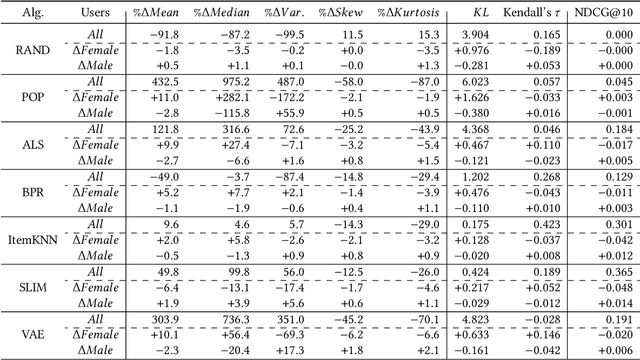Alessandro B. Melchiorre
Explainability in Music Recommender Systems
Jan 25, 2022



Abstract:The most common way to listen to recorded music nowadays is via streaming platforms which provide access to tens of millions of tracks. To assist users in effectively browsing these large catalogs, the integration of Music Recommender Systems (MRSs) has become essential. Current real-world MRSs are often quite complex and optimized for recommendation accuracy. They combine several building blocks based on collaborative filtering and content-based recommendation. This complexity can hinder the ability to explain recommendations to end users, which is particularly important for recommendations perceived as unexpected or inappropriate. While pure recommendation performance often correlates with user satisfaction, explainability has a positive impact on other factors such as trust and forgiveness, which are ultimately essential to maintain user loyalty. In this article, we discuss how explainability can be addressed in the context of MRSs. We provide perspectives on how explainability could improve music recommendation algorithms and enhance user experience. First, we review common dimensions and goals of recommenders' explainability and in general of eXplainable Artificial Intelligence (XAI), and elaborate on the extent to which these apply -- or need to be adapted -- to the specific characteristics of music consumption and recommendation. Then, we show how explainability components can be integrated within a MRS and in what form explanations can be provided. Since the evaluation of explanation quality is decoupled from pure accuracy-based evaluation criteria, we also discuss requirements and strategies for evaluating explanations of music recommendations. Finally, we describe the current challenges for introducing explainability within a large-scale industrial music recommender system and provide research perspectives.
Analyzing Item Popularity Bias of Music Recommender Systems: Are Different Genders Equally Affected?
Aug 16, 2021


Abstract:Several studies have identified discrepancies between the popularity of items in user profiles and the corresponding recommendation lists. Such behavior, which concerns a variety of recommendation algorithms, is referred to as popularity bias. Existing work predominantly adopts simple statistical measures, such as the difference of mean or median popularity, to quantify popularity bias. Moreover, it does so irrespective of user characteristics other than the inclination to popular content. In this work, in contrast, we propose to investigate popularity differences (between the user profile and recommendation list) in terms of median, a variety of statistical moments, as well as similarity measures that consider the entire popularity distributions (Kullback-Leibler divergence and Kendall's tau rank-order correlation). This results in a more detailed picture of the characteristics of popularity bias. Furthermore, we investigate whether such algorithmic popularity bias affects users of different genders in the same way. We focus on music recommendation and conduct experiments on the recently released standardized LFM-2b dataset, containing listening profiles of Last.fm users. We investigate the algorithmic popularity bias of seven common recommendation algorithms (five collaborative filtering and two baselines). Our experiments show that (1) the studied metrics provide novel insights into popularity bias in comparison with only using average differences, (2) algorithms less inclined towards popularity bias amplification do not necessarily perform worse in terms of utility (NDCG), (3) the majority of the investigated recommenders intensify the popularity bias of the female users.
 Add to Chrome
Add to Chrome Add to Firefox
Add to Firefox Add to Edge
Add to Edge